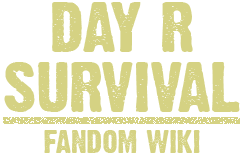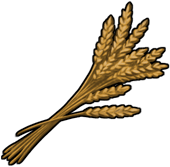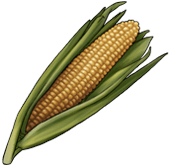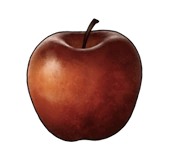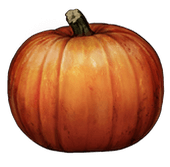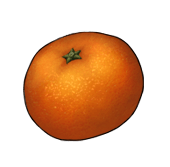Survivor´s guide to the wasteland "Farming", also known as the greenhouse guide.
Introduction
Achieving self sustainability is one of the ultimate goals of any survivor, when achieved, he can dedicate his time to other tasks than just trying to find food to survive.
In this chapter, the survivor will learn how to use, grow and harvest crops inside a greenhouse, where to get the neccesary materials for it and learn about the various types of crops available in the wasteland.
Preparing for planting
Before the survivor decides to take on the greenhouse and grow fresh fruits or vegetables, first he will need a greenhouse. If the survivor does not have any yet then please refer to the survivor´s guide to the wasteland "constructions" chapter of this guide.
Owning a greenhouse is only half of the job, as the survivor needs to gather all necessary tools and materials before the greenhouse can grow anything inside.
Tools
Planting requires the use of a shovel, any type of shovel will do.
Materials
Seeds:
- 90 seeds of a single crop are required to fill a single greenhouse. Every type of growable crop contains 5 seeds of said crop (e.g. 1 potato will yield 5 potato seeds).
Saltpeter:
- A single greenhouse requires 2,500 saltpeter. While saltpeter might look like a difficult item to obtain in those quantities by looting, the survivor can always trade 1 soap for 100 saltpeter at the Tula survivor camp.
Coal
- Coal can be easily acquired by making charcoal piles or by trading 1 salt for 25 coal at the Tyumen survivor camp. 30 coal is necessary to plant in the greenhouse.
Clean water
- 50 Clean Water is needed. Clean water can be obtained by filtering dirty water, boiling ice, or trading.
Planting
Gathered all material, the survivor has to choose which type of crop he wants to grow depending on his needs. All crops require the exact same materials and quantities mentioned above.
Be aware that planting is not done by selecting the greenhouse itself, planting is done by selecting the desired type of seed.
For the following example, corn seeds will be used.
If more than one greenhouse is going to be planted, the survivor needs to check the materials are equivalent to the amount of the greenhouses to be planted and move the slider until the desired number of greenhouses is selected and then proceed to select Plant.
After planting a greenhouse with corn, as in this scenario, a corn icon will appear. The crops will take 4 months to mature. During this time, the greenhouse can be cleaned if the player wants to interrupt the growing process. Though this would return a greenhouse ready to be planted again, all materials used for the initial planting would be lost as nothing would be returned after cleaning the greenhouse.
After the 4 months have passed, it will be time to harvest the crops. To do this, select the greenhouse and touch harvest.
Crops will not spoil while inside the greenhouse, if the survivor is not going to use the crops immediately.
Crops guide
Potatoes
|
Pros |
Cons |
|---|---|
|
|
| Potatoes are the most versatile type of crop available as they can be turned into many different objects if following a trade system. Potatoes are turned into moonshine, moonshine into alcohol, alcohol traded into salt at the Arzamas survivor camp, salt into detoxifying potions with the dugout survivor, and potions into insulating tape at the Sverdlovsk survivor camp.
However, plain potatoes don't offer much nutrition unless made into mashed potatoes. Final score:4/5 pasta cans | |
Wheat
|
Pros |
Cons |
|---|---|
|
|
|
Comments | |
| Gathering wheat can be a little hard or expensive at first because the only place that trades wheat is the Rostov-on-Don survivor camp or collecting the wheat found at the Zima bandit fort. once turned into flour, the trades are not that great as bricks and nettles are commonly found on the wasteland.
Final score: 2/5 pasta cans | |
| Score | |
Corn
|
Pros |
Cons |
|---|---|
|
|
|
Coments | |
| As a food source, corn is not very interesting. it can be boiled, but it only replenishes hunger and a bit of thirst. However, corn to make flour, but the yield isn't much better than wheat or it can be used to brew whiskey, which is, in turn, traded for car batteries and sugar.
The whiskey battery trade looses its significance in latter stages of the game when the BelAZ is finally obtained, leaving the only usage of corn whiskey to trade for sugar. Final Score: 3/5 pasta cans | |
| Score | |
Apples
Vegetables
Pumpkins
|
Pros |
Cons |
|---|---|
|
|
|
Coments | |
| Pumpkins have the biggest food replenishing rate of any other greenhouse crop, but given its large weight, lack of trades, and their seasonal appearance, pumpkins are pretty much useless. Its only use is to craft treats.
Final score: 1/5 pasta cans. | |
| Score | |
Tangerines
|
Pros |
Cons |
|---|---|
| |
|
Coments | |
| Lighter than apples and with a slightly bigger status recovery effects (health+5, food+25, water+15 energy+5) tangerines offer more nutrition and the capability of carrying more. tangerines downsides are grater than their usefulness, only appears during New Year´s event, no survivor camp trades tangerines and no recipe uses them.
While great as a food source, 4 or 7 have to be eaten in order to replenish all 100 or 150 food meter (if the player has the well fed perk) thus running out quickly. Compared to apples, the slightly lower health and food recovery but equal water and energy recovery makes the apple a more ideal food item as eating more apples will replenish more energy and water before fully replenishing the food levels. tangerines main usage is to miniaturize the Moroz's Terem into a snow globe for relocation, using 1,000 tangerines in the process, more than what a single greenhouse produces. Final score: 2/5 pasta cans. | |
| Score | |
Strawberries
| Pros | Cons |
|---|---|
| |
| Comments | |
| Unless eaten with the raw diet perk, strawberries are only used for making jam as and trading for wire at the Tula survivor camp as they can inflict food poisoning. Wire trading requires 5 strawberries for 1 wire, if the goal is to obtain electrical cables at Sverdlosvk, trading strawberries to wire to cable requires large amounts of strawberries to be grown.
if used for making jam, this can be used as an excellent food source or for trading for chemistry sets at the Krasnoyarsk Survivor Camp. Using strawberries for crafting and further trading requires large quantities and, if used as a food source,strawberries only shine if used along side raw diet. Final score, 3.5/5 pasta cans. | |
| Score | |
Chapter review
The survivor has learned how to grow crops in the greenhouse, the tools needed on how to acquire the materials for growing his own food as well as the types of crops available and the pros and cons of each.
This concludes this chapter of the guide
Chapters
Previous chapter
Next chapter: Cooking
